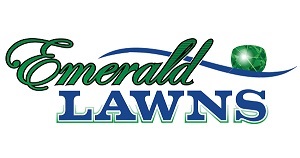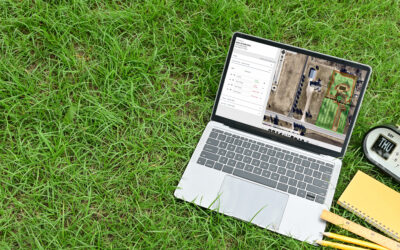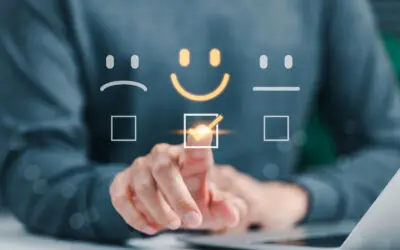How the Senske Family of Companies Increased Production with Updated Hardware and Firmware
Having Software Issues? It might be your hardware.
Have you ever been offered a free tablet or phone to use a specific software or cellular provider? Those freebies might seem like a good deal, but they might end up costing you in the long run. If your mobile app is running slow in the field or your in-office computers are spiraling when you try to complete tasks in Service Assistant, it might not be the software. Hardware that can’t easily run the powerful programs you’re depending on probably isn’t doing you any favors.
 RealGreen recently spoke with Mike Russo, Director of Systems & Customer Engagement at Senske Services, about some of the equipment upgrades made by Blades of Green and Emerald Lawns, Senske Family Companies – and the direct effect those upgrades had on productivity.
RealGreen recently spoke with Mike Russo, Director of Systems & Customer Engagement at Senske Services, about some of the equipment upgrades made by Blades of Green and Emerald Lawns, Senske Family Companies – and the direct effect those upgrades had on productivity.
RG: Can you share some of the problems you were experiencing?
MR: I’d say Mobile Live is where we got the biggest lift out of hardware improvements. First, we were having some connectivity issues in certain areas where technicians in the field could not post-production because their devices weren’t working. We ended up having people in other areas – customer service reps, dispatchers, etc. – having to spend hours of their days helping the techs catch up. In addition, both Blades of Green and Emerald Lawns were using either older tablets or basic tablets that met the very minimum requirements to run the program. Ultimately, we switched them over to a different cellular network provider and upgraded them all to iPad Minis.
RG: And how did that help with production and productivity?
MR: Production numbers rose significantly. For example – we upgraded a couple of techs as a trial run. One tech in the trial averaged $116/hour, $142/hour, $136/hour, and $114/hour on his old device in the four weeks before upgrading. Using the iPad, he averaged $150/hour, $160/hour, $215/hour, and $181 per hour. A huge increase in production when measured in dollars produced per hour.
That’s an average 39% increase in production dollars per hour!
There were also improvements in performance and productivity that are harder to measure – like the two to four hours per day our office staff is saving by no longer having to help techs with posting production, and the generally positive user experience our techs are having with their new equipment. They no longer want to throw their tablet out the window while they’re driving, because it just works.
RG: What was the investment cost to make all of these upgrades? Would you consider it a good ROI?
MR: I think it was around $500 per tech, but at those increased production numbers, each tech made back that cost within a week. Definitely a good return on our investment.
RG: If you were talking to a Mobile Live user who was having issues with the app, what would you suggest to them to help improve performance?
MR: First, I would ask: What cellular provider are you using – what’s your coverage area? And what devices are you using? Finding the right cellular provider for your area is essential. If your data service is bad, it won’t matter which devices you are using. Second, in talking with everyone at RealGreen, it became apparent that you think Mobile Live works best in the iOS environment. If the techs are not on an Apple device, I would suggest they follow the software developer’s recommendations. We went with iPad Minis because they were the most affordable option.
RG: Part of the reason we recommend iOS devices is there is more consistency across the board as compared to the Android world. Plus it’s one operating system regardless of what Apple device you have.
MR: Exactly – even if you have a tech who has been with the company for five years, he might have an older iOS device but even in those instances they still work pretty well, because the basic Apple devices in general have a higher spec hardware than base model Samsung tablets.
RG: Let’s switch gears and talk about Service Assistant 5. What issues were you seeing on the SA5 side, and what did you do to speed things along?
 MR: Many SA5 users at our headquarters building were complaining that it was just slow, slow, slow. I started by investigating what kind of internet we had – and I discovered we had a fiber line we weren’t actually using. We also found that the network switches on our firewalls were 10 years old, and they just weren’t putting the bandwidth through to our users. We replaced every WiFi access point in the building, replaced the firewalls, and upgraded the switches. Making sure you have decent internet for the number of users, and that your infrastructure is up to date is crucial.
MR: Many SA5 users at our headquarters building were complaining that it was just slow, slow, slow. I started by investigating what kind of internet we had – and I discovered we had a fiber line we weren’t actually using. We also found that the network switches on our firewalls were 10 years old, and they just weren’t putting the bandwidth through to our users. We replaced every WiFi access point in the building, replaced the firewalls, and upgraded the switches. Making sure you have decent internet for the number of users, and that your infrastructure is up to date is crucial.
We also did some computer upgrades. In the past, we were wary of issuing new devices to everybody – trying to keep the wheels on the bus with the smallest number of laptops. But we found that those wheels were used tires that had been on three buses beforehand, and they weren’t roadworthy anymore. These older devices had older processors – some of them weren’t even capable of running Windows 11.
We ended up purchasing 120 laptops. Once we put newer devices in front of people with better internet and revamped office infrastructure, things got faster. And the user experience vastly improved. Whether you’re talking about SA5 or Mobile Live, if you give your employees a high-quality device with a good connection to a premium cell provider and/or internet you’ll have fewer headaches for your team. In the long run, that can translate to more productive employees who stay with the business longer.
Consider the true cost of free or cheap equipment: When you’re running powerful software, you need hardware that’s up to the task. With the right tools, your staff can use every solution to its fullest potential — reducing frustration, increasing satisfaction, and ultimately, helping you run and grow your business.


